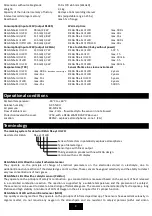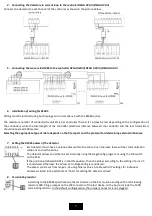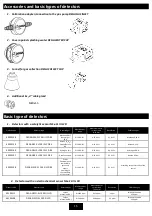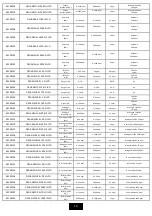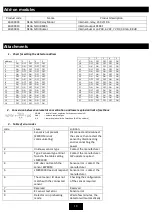
5
compounds) which cause a change of sensitivity of catalytic sensors. The sensors are characterized by high stability and a long
lifetime.
DEGA NSx-SL III LCD with a semiconductor sensor
They operate on the principle of changes in electrical conductivity of semiconductors by changing the concentration of the
detected gas. Their advatage is a long lifetime in a clean environment and a wide range of different types of gases and vapors.
Their disadvatage is their low selectivity - the sensor largly responds to other gases for which it is not calibrated.
DEGA NSx-PL III LCD PID with a PID – photoionization sensor
Typical photoionization detectors measure volatile organic compounds and other gases in concentrations from sub parts per
billion to 10 000 parts per million (ppm). The photoionization detector is an efficient and inexpensive detector for many gas
and vapor analytes. PIDs produce instantaneous readings, operate continuously, and are commonly used as detectors for gas
chromatography or as hand-held portable instruments. Hand-held, battery-operated versions are widely used in military,
industrial, and confined working facilities for health and safety. Their primary use is for monitoring possible worker exposure
to volatile organic compounds (VOCs) such as solvents, fuels, degreasers, plastics & their precursors, heat transfer fluids,
lubricants, etc. during manufacturing processes and waste handling.
Product description
Magnetic control
„BACK“
Magnetic control
„FRONT“
Ex „d“ cable gland
Magnetic control
„ENTER/EXIT“
IrDa interface
OptionalEx „d“ cable
gland
Body of the
removable sensor
Cover against splashing
water (optional accessories)
Body of the removable
sensor
Ex „d“ cable gland
Cover against
splashing water
(optional
accessories)
Mounting holes
PCB electronics
Ex „d“ cable gland
Optional Ex „d“ cable gland
Body of the
removable sensor
Power supply terminal
block+24V DC
Power supply
terminal block GND
Signal terminal block 4-20 mA
6
5
8
7
4
3
2
1
11
0
10
0
9
6
5
8
7
4
3
2
1




